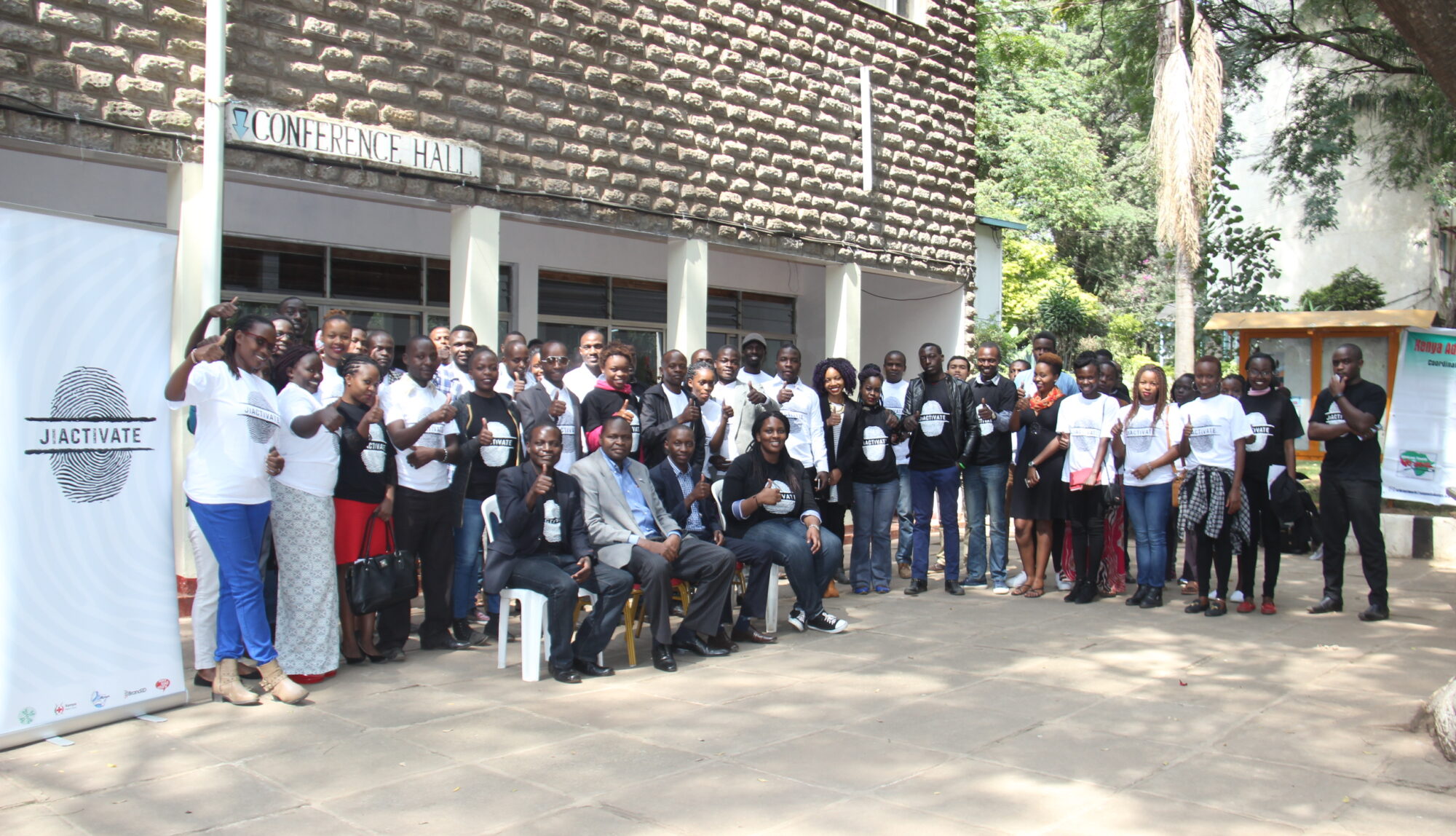Safe Spaces for Youth is a Measure of National Conscience

The 2018 United National theme for International Youth Day, #SafeSpacesforYouth, is a deliberate move to emphasises and highlight the challenges youth face globally, in civic, digital and public spaces. The Kenyan Vision 2030’s three pillars: the economic, the social and the political pillars, mirror the three spaces identified by UN. The theme was drawn from Goal 11 of the Sustainable Development Goals (SDG 11) where countries, in 2015 committed to ‘make cities and human settlements inclusive, safe, resilient and sustainable’. In Kenya the nature and extent of the safety of these spaces is varied, diverse and subject to different interpretations.
The Commonwealth measures youth development through 5 main indices, civic engagement, political participation, education, employment and jobs, and health and wellbeing. These parameters measure whether there is progress or retrogression in youth development.
Kenyan youth civic engagement space has been very vibrant. This space actually exist and very safe in Kenya. Civic engagement in Kenya is diverse, sometimes sporadic, less coordinated and controlled and do not bear features of a professional practice. It is largely open for all space, the cornerstone of its vibrancy and youth leaders and youth led organisations’ mobility and mutation. The space is hard to define and may entail those organising for career and skills fairs, volunteerism and community service, peace events, health advocacy, conservation among others. the ease of registration of a youth organisation or even to operate without registration make Kenyan youth civic space of the most open in the world, free of intimidation, witch hunt or censorship. There are however some emerging issues around lack of coordination of the sector, working in silos, lack of policy recognition or definition of youth work as required by Africa Youth Charter. Also, the digital space has become a space of positive advocacy, activism and direct challenge to some laws and public actions. However many youth have been intimidated online by those in authority, arrested maliciously and threatened. Digital space has also become kind unsafe space for some youth due to cyber bullying such as trolling, body shaming, and child abuse and identity theft.
The Kenyan political space, especially during and immediately after elections, save for 2002 since the restoration of multiparty democracy has been largely unsafe for youth. The political terrain is very hostile and characterised by intimidation, money based political ideologies and violence, especially meted on female candidates. During the 1992, 1997, 2007, 2013 and 2017 elections most of the victims of the violence were youth.
Enhancing youth safety in the political spaces requires public participation modelled around inclusivity, equity and meritocracy. Recent actions have however contributed to shrinking youth political space in Kenya. For example, the recommendations in the proposed National Youth Policy to have the National Youth Council members nominated and not elected by the youth , as currently the case, coupled with new legislation to have university students body elect members through electoral college, will drastically shrink the youth political space in Kenya.
While political participation leads to open governance and transparency, the extent of youth political engagement, in a free manner, in Africa is mild and sometimes intimidating.
The Kenyan education space is generally safe for the youth. Kenya has witnessed tremendous expanse of the education space, from primary to tertiary level since 2003. While on and off cases of high schools and university students strikes and other forms of violence have been reported, the safety of the Kenyan educational institutions has been fairly good.
The Kenyan job market space is generally ‘unsafe for youth’. Various bodies put unemployment rate between 30 and 40% in Kenya. According to 2016 Kenya Youth Survey Report by East Africa Institute, ‘55% of Kenyan youth aged 18-35 years old, who want to have a job, work hard, and make the most of their lives, are unemployed’. Further, the 2015/16 Kenya Integrated Household Budget Survey established that 29% of Kenyan youth aged 15-29 years old are NEETS (Not in Employment, Education, or Training). Well intended efforts have been made by the government to enhance youth employment and employability through training and skills building and creation of affirmative funds all cadre of youth. However, the Kenyan employment and jobs space is affected by ethnicity, nepotism and favouritism in employment as acknowledgement by the official ombudsman. There is an also late payment to youth owned enterprises for governments businesses that may weigh down on Kenya’s improving ease of doing business index.
Health and wellbeing is a major issue facing youth today in Kenya. Kenya has a very elaborate guidelines on the implementation of youth friendly services, developed by Ministry of Health. With the devolution taking shape, come counties has not fully adopted the guidelines that call for youth participation, engagement, ownership and acceptance of the services. In some scenarios, access to vital information and health services in a friendly and confidential manner, in a rights based approach, is affected by various factors including providers’ attitudes and lack of inadequate resources.
For the youth to be part of the SDGs agenda and contribute to national development, the civic, digital and public spaces must be safe for all, anywhere, anytime. One strategy would be to incorporate youth work in the social work and youth policy to help in sector coordination and development of a practice with codes of conduct. The answer partly lies in the demographic dividend roadmap that calls for invest in youth’s education, health, employment and good governance. This way, we will realise Vision 2030 aspirations for higher incomes and better quality of life for all citizens as well as Agenda 2030’s people and planet’s propensity in a peaceful space call within the context of ‘Leave no One Behind.’
Michael A.